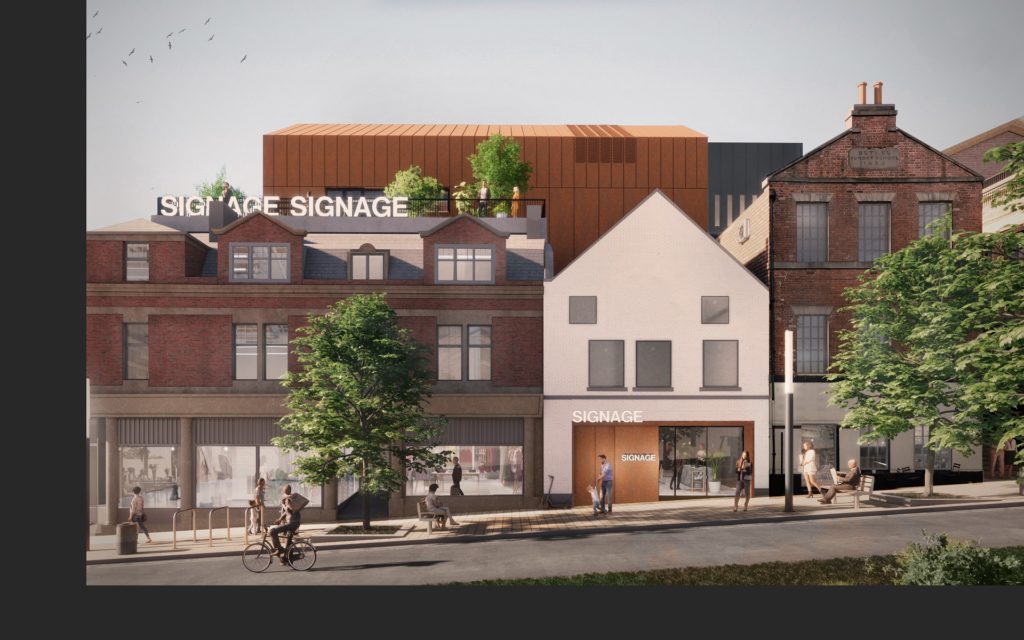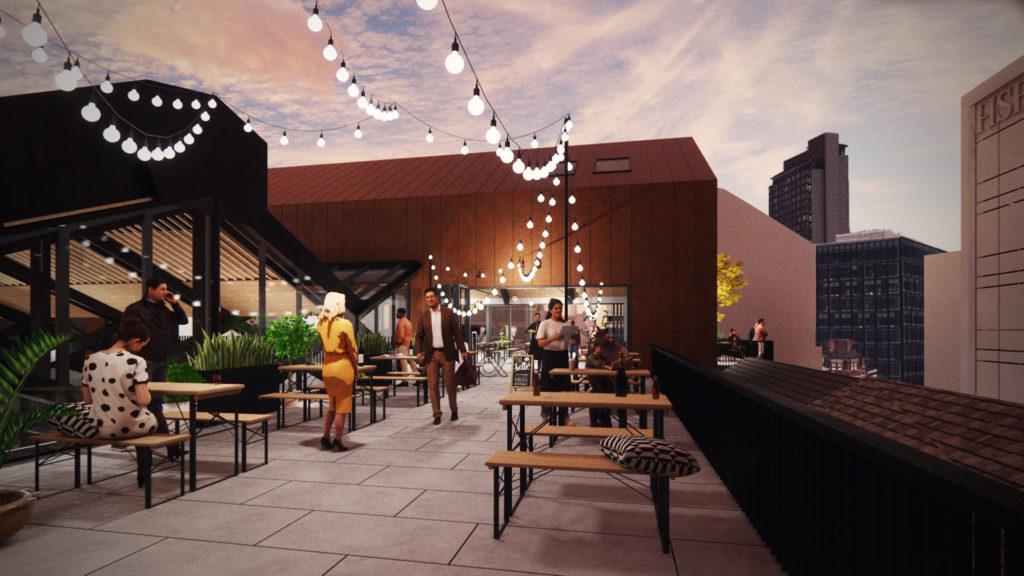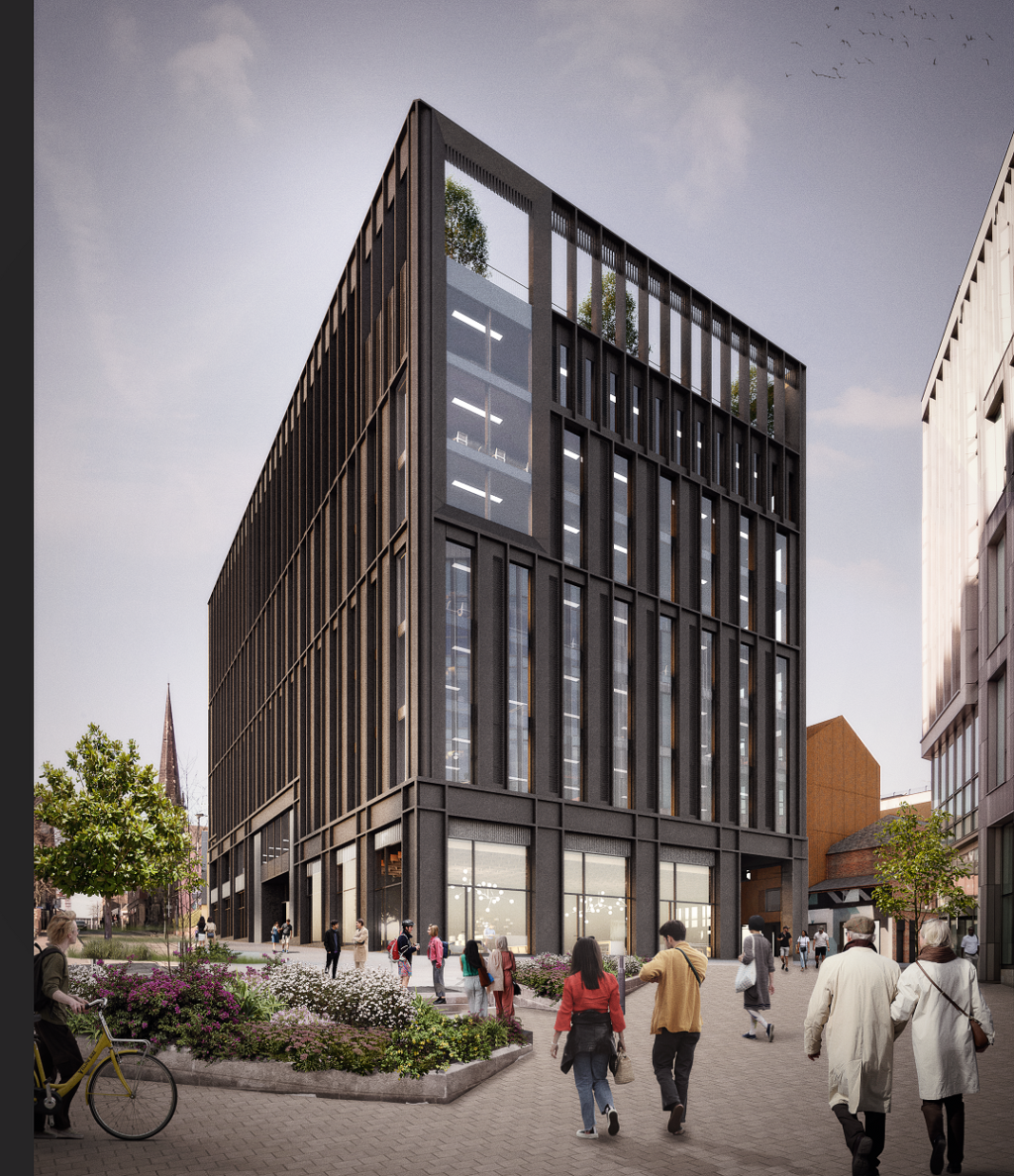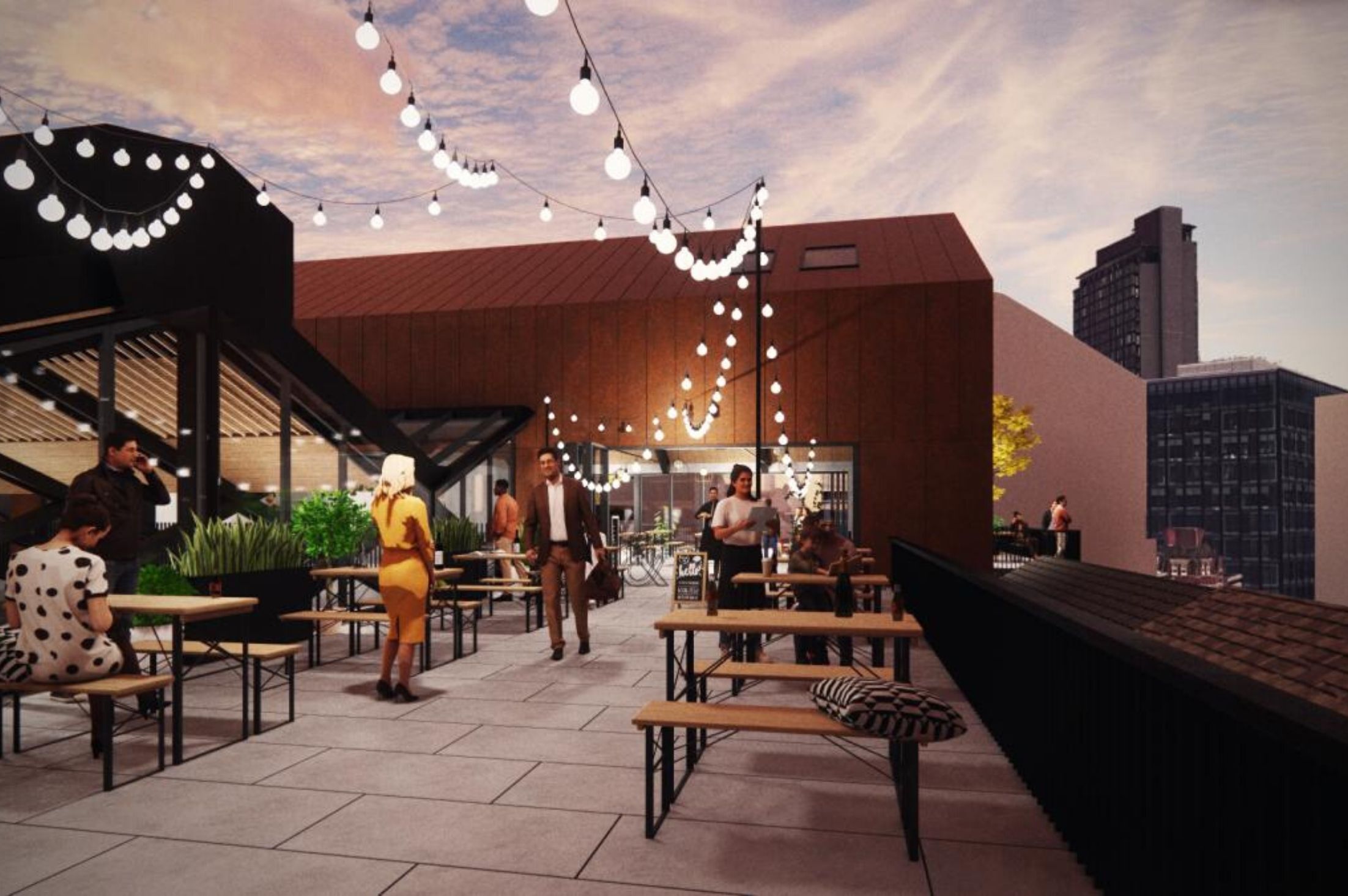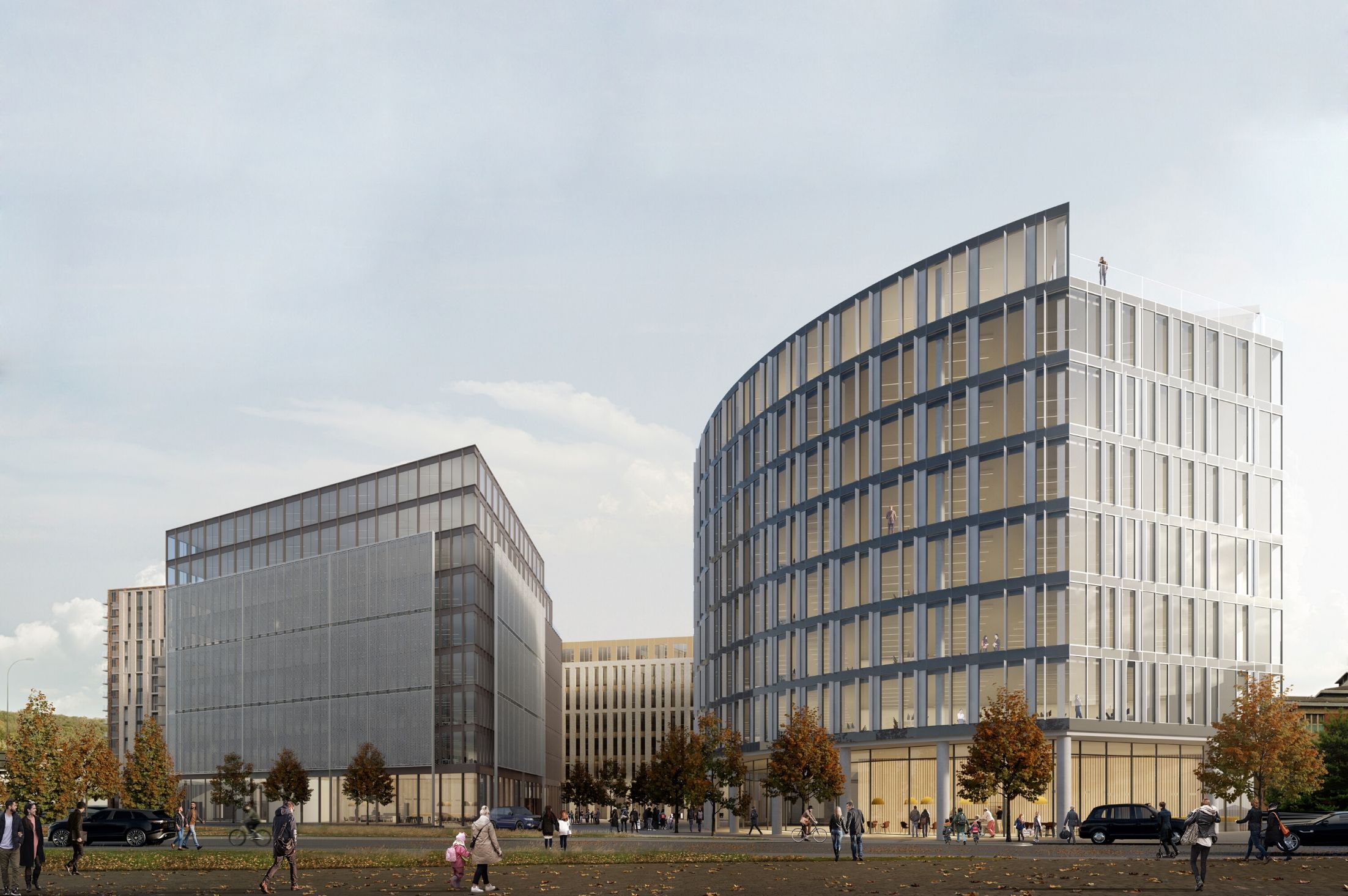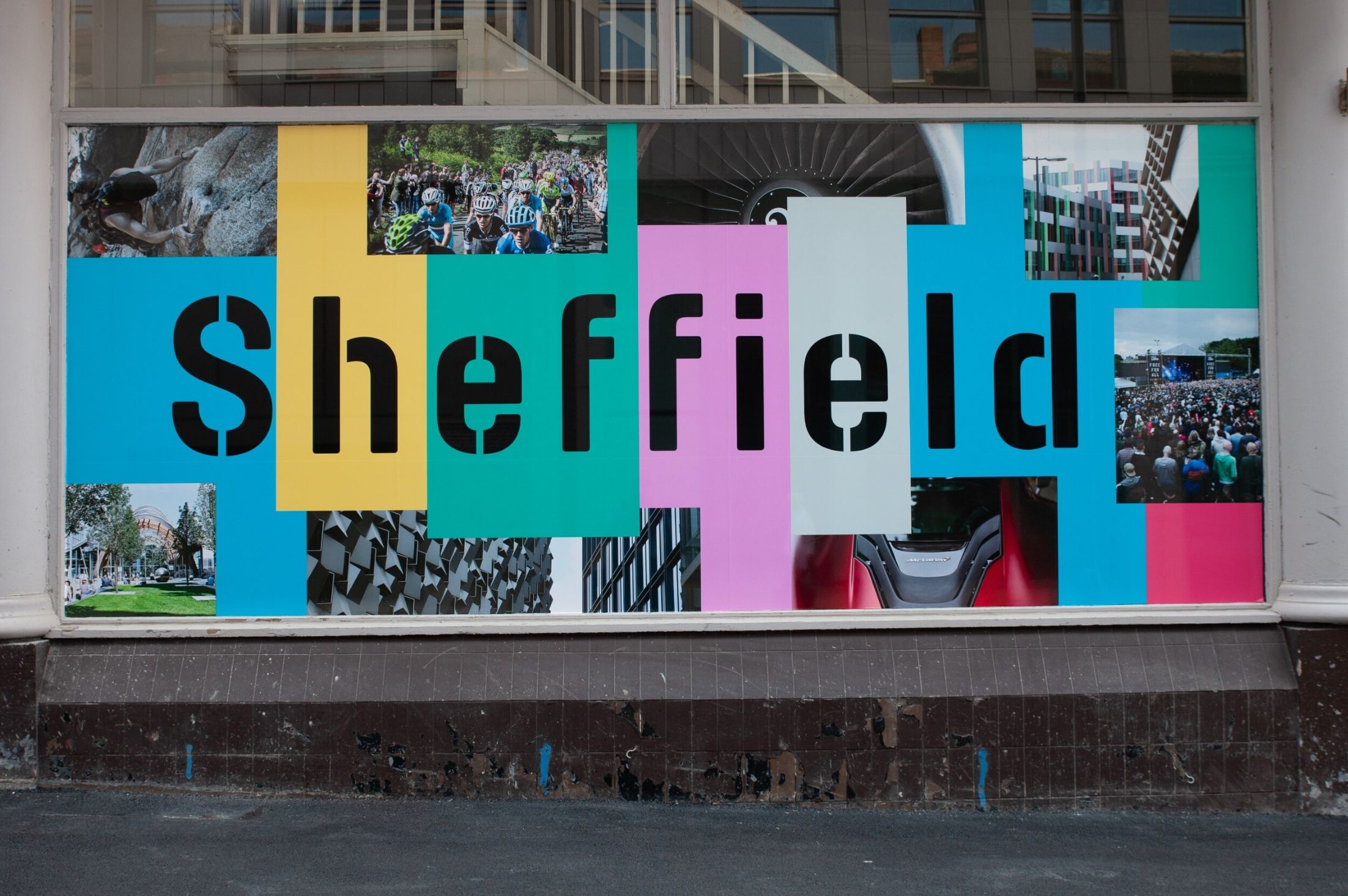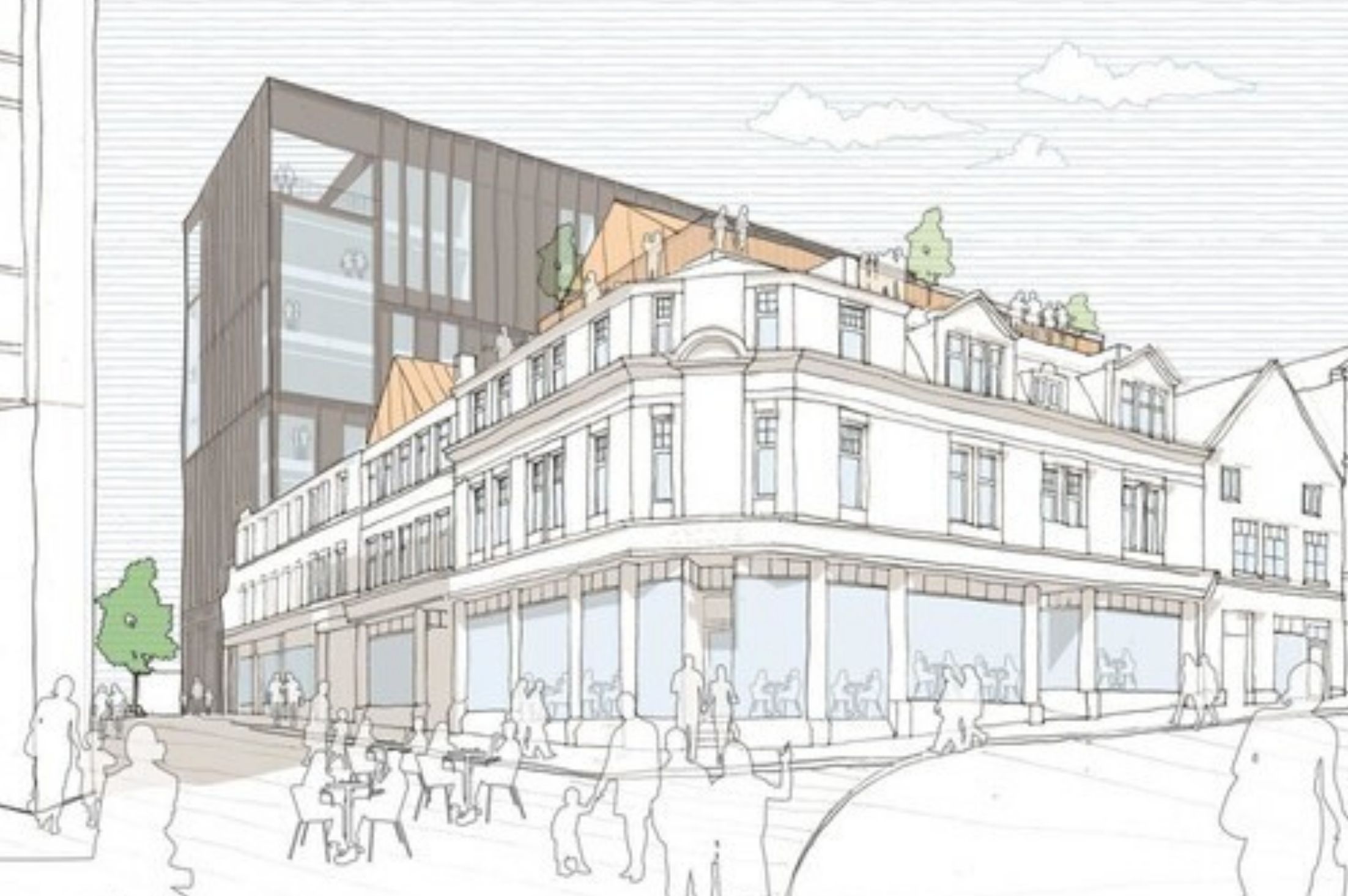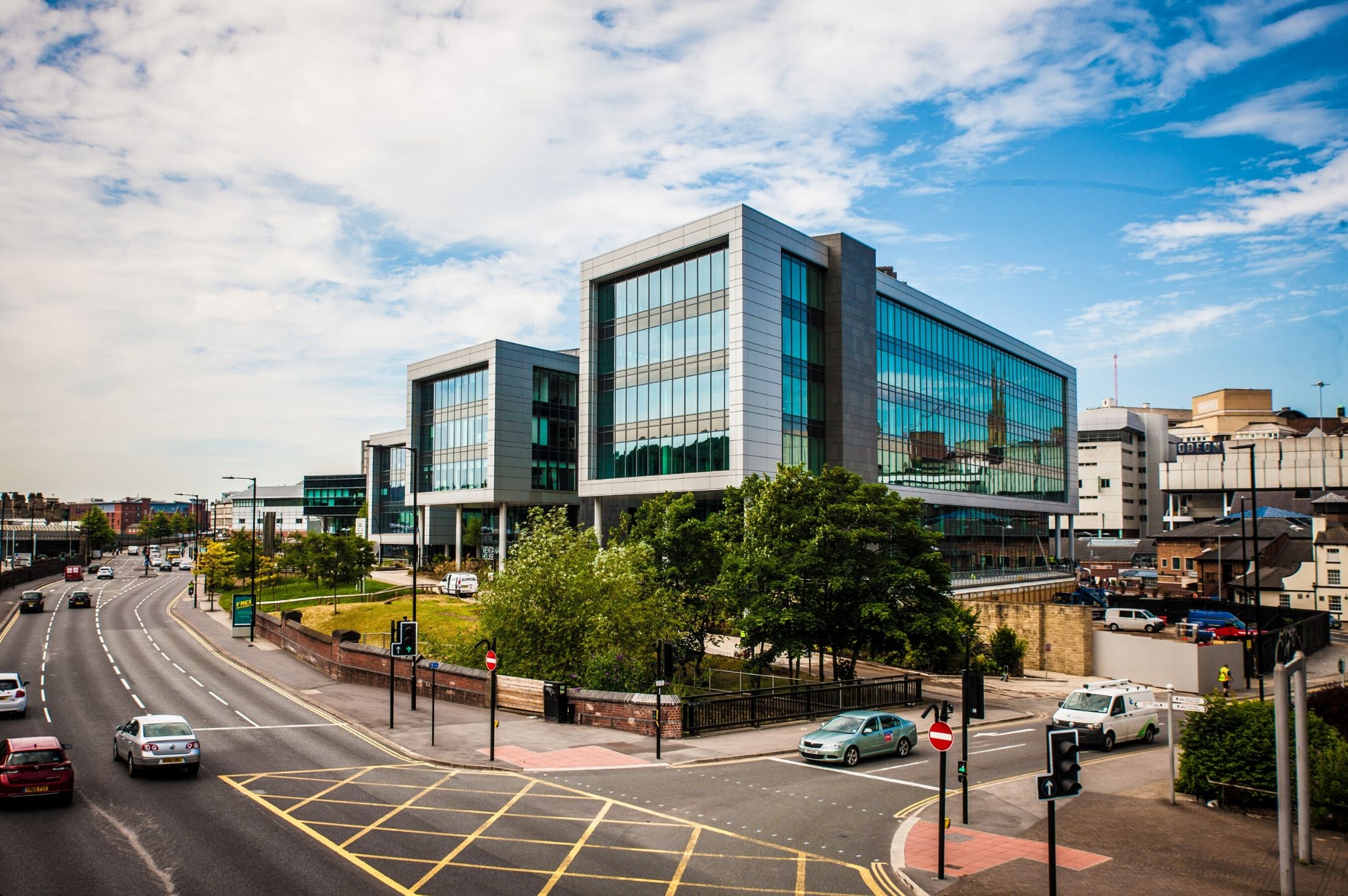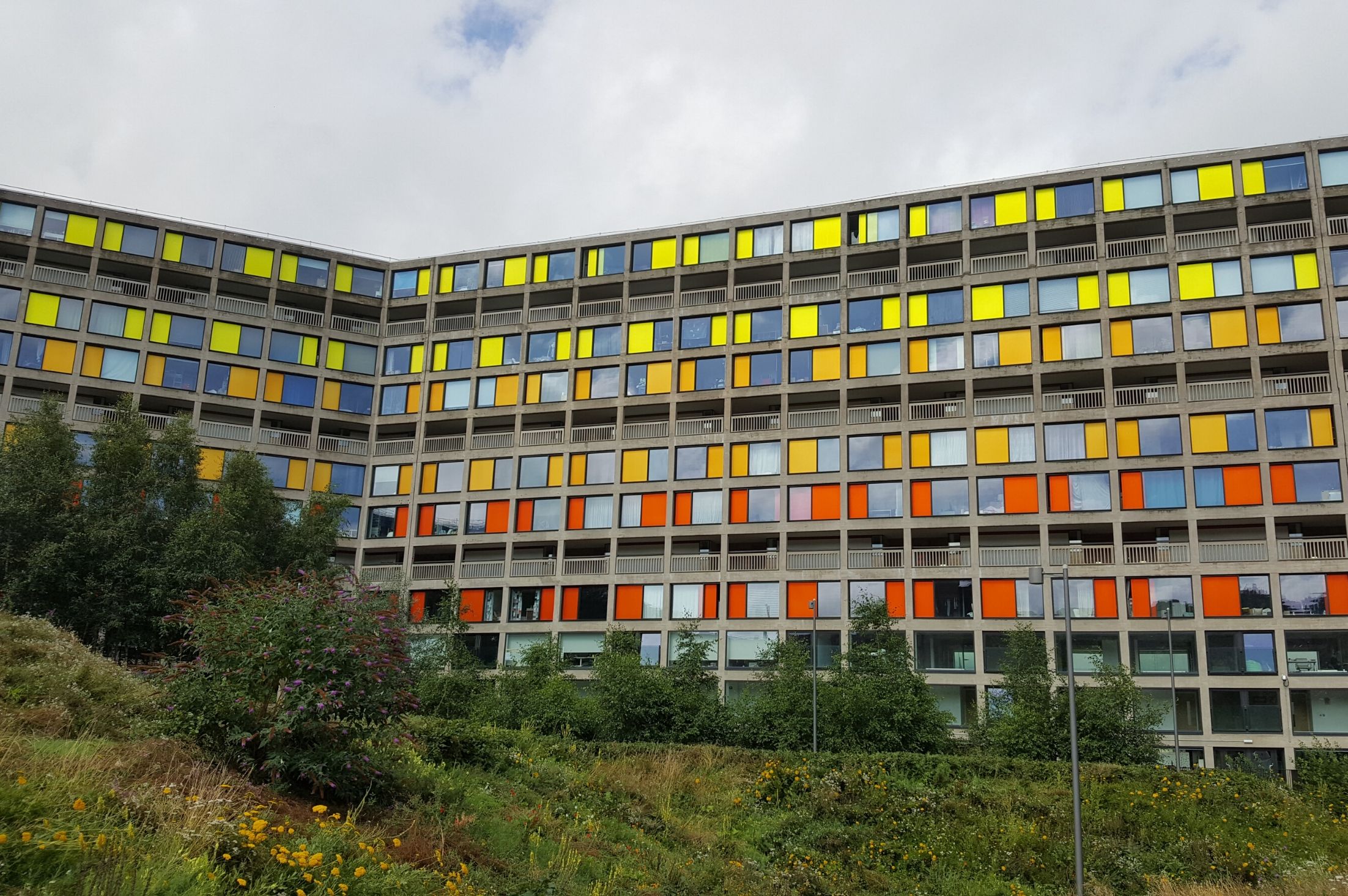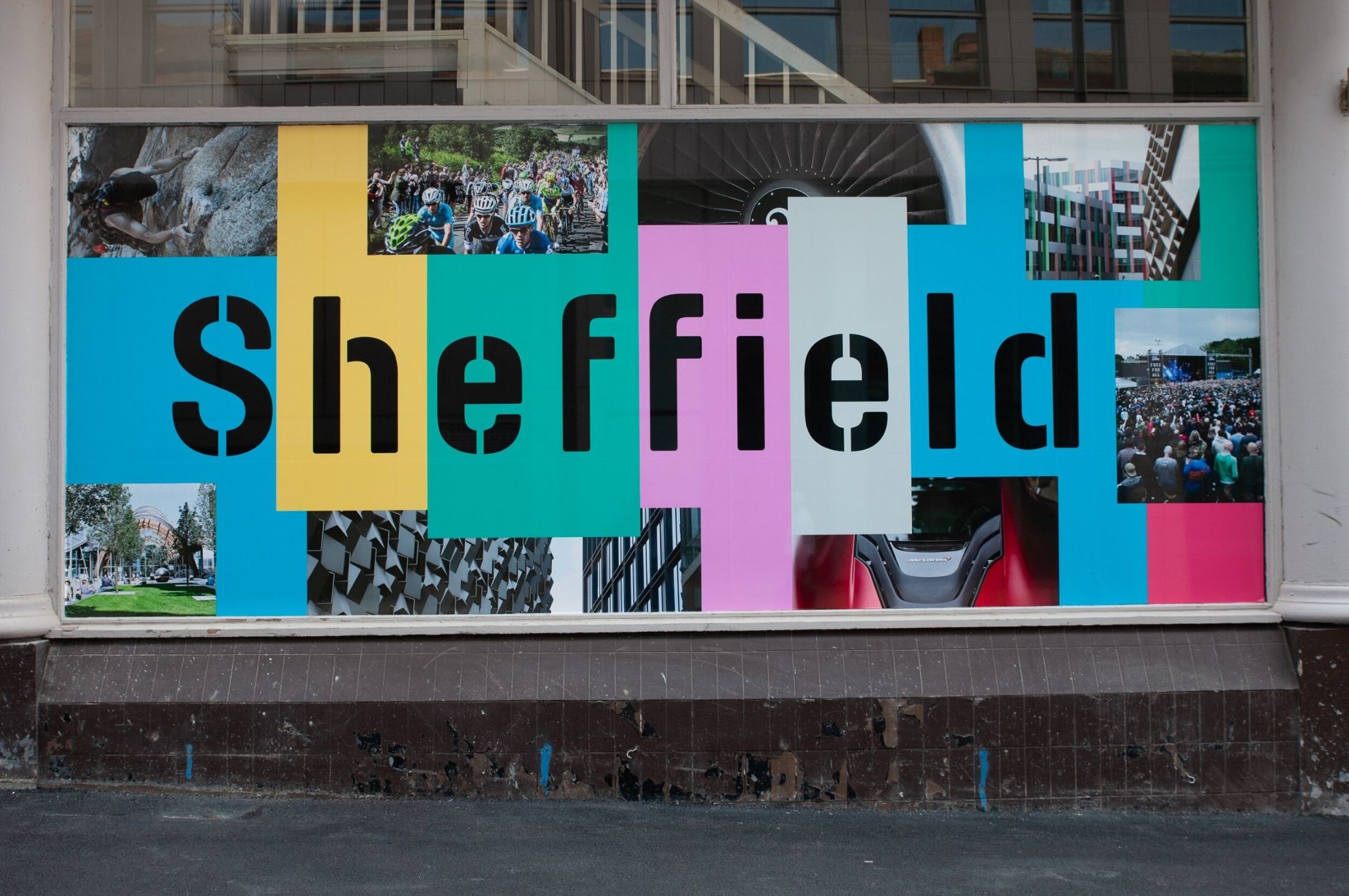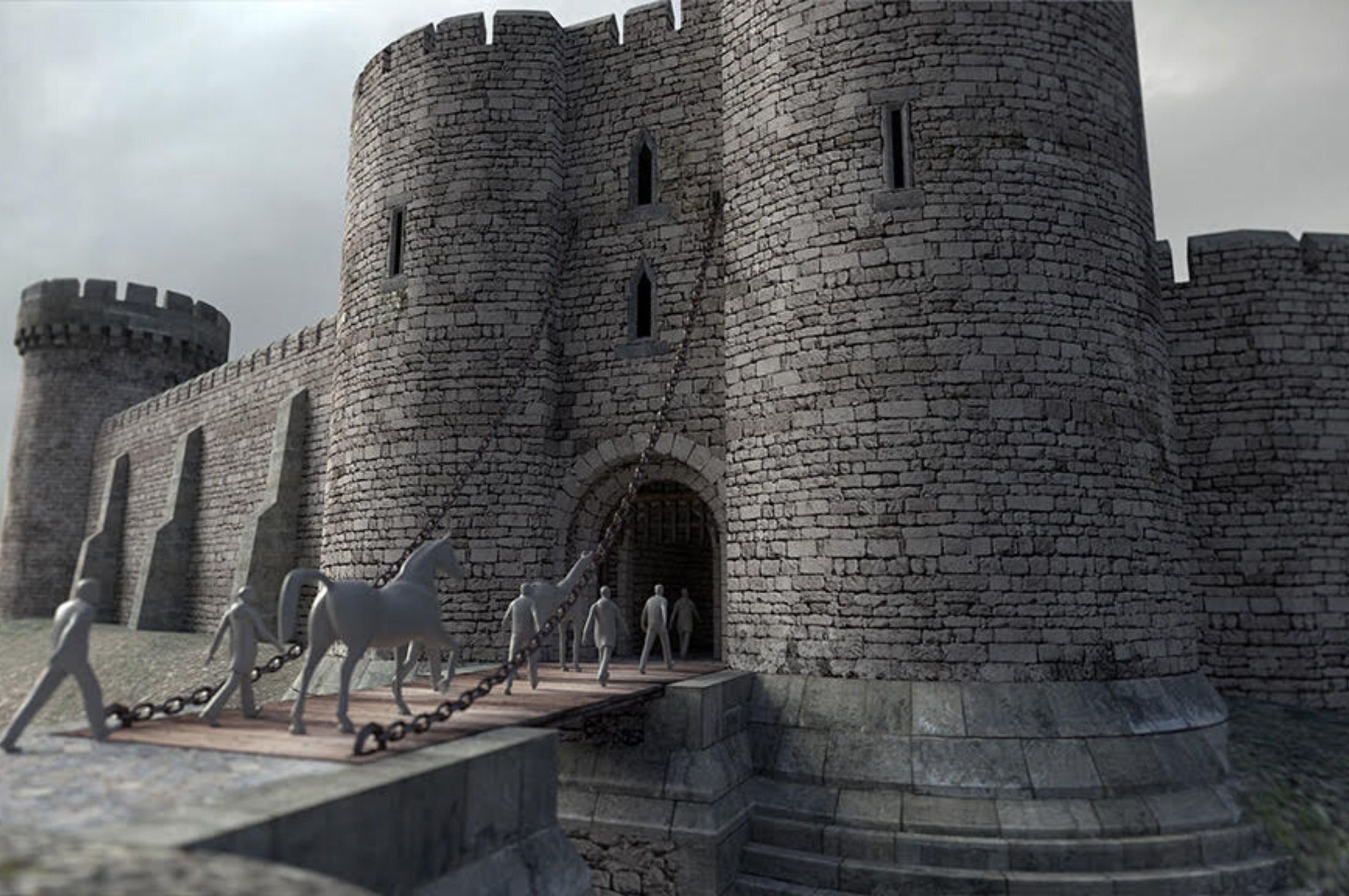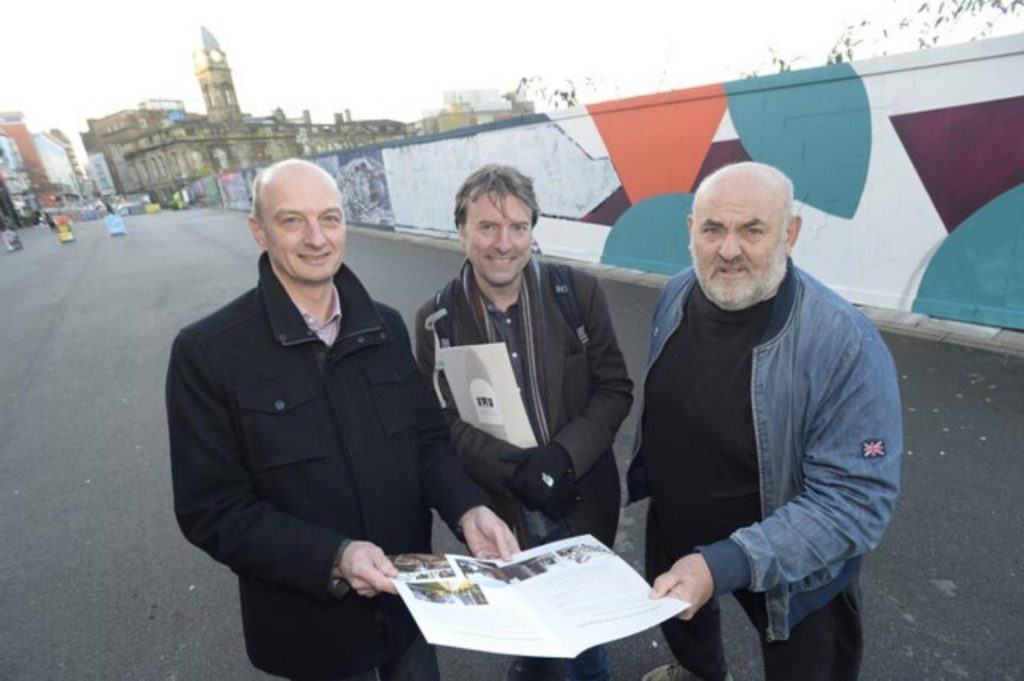Planning applications for the next phase of the Heart of the City II scheme, which include a cultural destination and a new low carbon office building, have been submitted by Sheffield City Council recently (May 2020). The announcement marks another milestone for Sheffield’s landmark regeneration project, as it continues to transform the city centre.
As we continue to face the daily challenges of the current pandemic it is encouraging to see work to transform Sheffield city centre is still in progress and that all will be ready to make way for life after the pandemic.
Block H, located between Wellington Street, Carver Street and Cambridge Street, sits at the centre of the Heart of the City II masterplan and includes some of the most interesting heritage buildings.
The strategy for the block is to create a new ‘cultural heart’ for the scheme, which will combine existing and new architecture to provide a destination which is uniquely Sheffield. The proposals have been designed by award-winning architects Feilden Clegg Bradley Studios.
Proposals for Cambridge Street Collective – which will sit behind Henry’s Corner and Bethel Sunday School on Cambridge Street – include a large, industrial-style space where people will be able to meet to eat, drink and be entertained. The historic building fronts will be retained and adapted to bring them back into use, with a new structure added behind which will complement the older architecture.
Wrapping this space will be complementary shops, a bar and restaurant, and an upper level leisure space. The existing Bethel Chapel building will also be renovated, with plans for this to become a live entertainment venue.
Next to Cambridge Street Collective, a visually striking low-carbon office building is proposed for the vacant site in between Cambridge Street and Carver Street. The new premises will provide approximately 70,000 sq. ft of Grade A office space over seven floors, with shops, restaurants or cafés at the ground floor. The building’s dark coloured metal finish is inspired by Sheffield’s celebrated industrial past, allowing it to complement heritage assets across the Block H site.
Councillor Mazher Iqbal, Cabinet Member for Business and Investment at Sheffield City Council, said:
“I am delighted that we have been able to progress these plans over recent months and can now submit planning applications for the next phase of Heart of the City II.
“The submission of the planning applications follows over six weeks of public consultation, where local residents, businesses and interest groups participated and shared their thoughts. The comments and insights we received have helped us to further shape these proposals, and I would like to personally thank all who provided their views.
“There’s no doubt that these are unsettling times for all of us, including many city centre businesses. Whilst it is critical for us to help our businesses with immediate challenges, it is also vital that we continue to build a strong and resilient city centre that is fit for the future. The delivery of Heart of the City II is central to those efforts.”
Andrew Davison, Project Director at Queensberry, commented:
“The plans for Block H epitomise our ambition to create places with character and personality that will bring something entirely unique to Sheffield city centre. Cambridge Street Collective promises to become a destination that both locals and visitors will cherish and enjoy, and we are very excited about bringing this vision to life.”
Planning & Design Practice which has a close connection with Sheffield, welcomes this news. Having long maintained an office in the city and with numerous clients and projects in the region, we are based at The Workstation, Sheffield’s leading business centre for creative talent and innovation in the heart of the city’s thriving Cultural Industries Quarter. Our Sheffield office is led by Michael Bamford, a chartered town planning consultant.
Michael said:
‘It’s great to see progress on the next phase of Heart of the City II. The plans retain the city’s heritage, but re-purpose and re-invigorate an area which has historically declined. The proposals will complement the great work that has already been completed around Heart of the City I and II and which be transformative for the city centre.”
Please contact Michael if you require assistance with planning applications, appeals or local plan representations or require advice on lawful development certificates or development appraisals, at michael.bamford@planningdesign.co.uk
Main image: Artist impression of the bar terrace in Block H
Images – with thanks to Sheffield City Council
